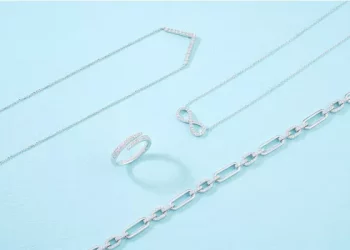Six years ago, LVMH CEO Bernard Arnault and former President Donald Trump inaugurated a new Louis Vuitton (LV) factory in rural Texas, aiming to produce luxury handbags for one of the world’s most prestigious brands. However, the plant, situated on a 250-acre ranch, has faced significant challenges that have hindered its production, according to interviews with 11 former employees. Despite high expectations, the facility has consistently ranked as one of the worst-performing in the Louis Vuitton global network, underperforming compared to other sites.
The Texas plant’s troubles underscore the challenges faced by LVMH in expanding its U.S. production footprint to mitigate risks from potential tariffs on European-made goods, a concern raised by Trump at the time. “The ramp-up was harder than we thought it would be, that’s true,” said Ludovic Pauchard, Louis Vuitton’s industrial director, acknowledging the difficulties in the facility’s development.
A primary issue at the Texas site has been the shortage of skilled leather workers capable of meeting Louis Vuitton’s high standards. Former employees revealed that it took years for workers to produce even basic components, such as the simple pockets of the Neverfull handbag. Additionally, errors in the cutting, preparation, and assembly processes led to waste rates as high as 40% for leather hides, double the typical industry rate of 20%, one former worker said.
In an effort to meet production goals, supervisors at the plant reportedly overlooked defects in products, with some employees even encouraged to conceal imperfections. Pauchard confirmed that such incidents occurred in 2018 but claimed that they were resolved after the removal of the problematic manager involved. Products deemed unfit for sale are reportedly shredded and discarded.
The factory mostly produces less complex Louis Vuitton models, with the brand’s more premium items made elsewhere, according to one former production supervisor. Despite these issues, Pauchard emphasized that Louis Vuitton remains patient with the Texas facility, highlighting its commitment to ensuring that all products meet the brand’s exacting quality standards.
The facility, named “Rochambeau” in homage to a French general from the American Revolution, has made significant strides, producing handbags such as the Felice pochettes and Metis bags with “Made in USA” tags. However, former employees noted that some of the items produced, including the Carryall, Keepall, and Neverfull, faced quality concerns. Louis Vuitton has not disclosed which specific models are entirely or partially manufactured at the Texas plant.
The Texas site has also struggled to meet its workforce targets. Despite initial promises of creating 1,000 high-skilled jobs, the factory’s workforce stood at just under 300 employees as of February 2025. Recruitment was delayed by the COVID-19 pandemic and subsequent lockdowns, according to Pauchard, who also noted a decline in local demand for luxury goods.
In terms of labor, the factory has offered competitive wages, with starting pay at $13 per hour, later rising to $17 per hour as of 2024. However, former employees reported high pressure to meet stringent production goals, leading some to cut corners or leave for less demanding roles.
LVMH also secured significant tax breaks for the Texas plant, including a 10-year, 75% property tax reduction. Despite the ongoing challenges, the company is investing further in Texas, with plans to expand operations and move additional jobs from California, where the company is streamlining its production.
The difficulties at the Texas plant reflect the complexities LVMH faces as it strives to build a U.S.-based manufacturing presence for its luxury goods, all while maintaining the high standards that Louis Vuitton customers expect.
Related Topics:




























